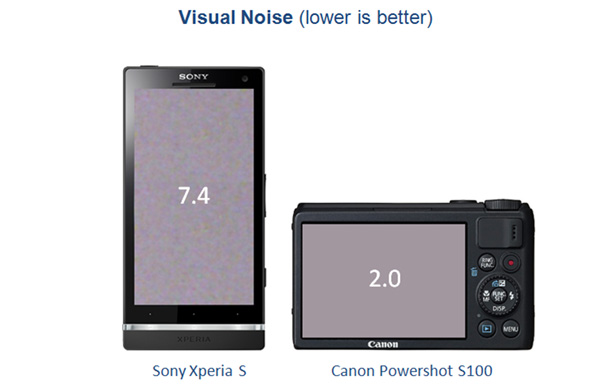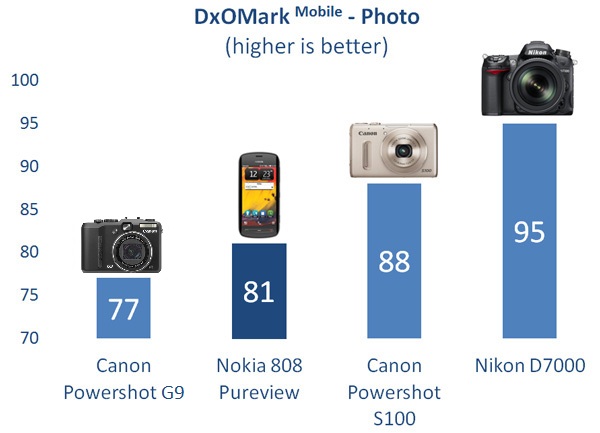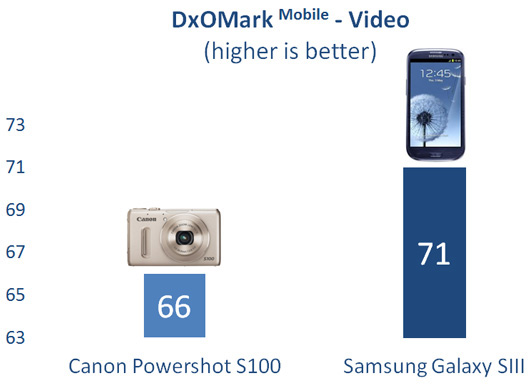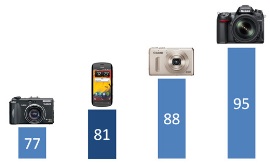Is a smartphone worth using as a digital still camera?
Like the iPhone 5, most of today’s competitive smartphones sport a camera with a sensor of at least 8megapixels. This is a far cry from one of the world’s first mass-produced camera cellphones, the Sharp-made J-SH04, which had a sensor resolution of 110,000 pixels, or just 0.1-Mpix. Nokia has blown all of these specifications out of the water with its new, bulky, 41-megapixel Nokia 808 PureView.
But shrinking and squeezing more megapixels onto a sensor’s surface does not necessarily translate to better image quality. Smaller pixels and their reduced area-size absorb less light, which consequently leads to a reduction in their signal-to-noise ratio, often leading to noisier images, as can be seen in the following graph comparing a smartphone and a DSC (both with 12-Mpix sensors).

Many mobile devices address noise through their imaging filters and processors. But tamping down noise frequently leads to other image defects, such as loss of detail and texture, as pictured below for the Galaxy S III.

These few examples give some clues about the deep knowledge of mobile-specific defects necessary to develop accurate testing protocols for mobile imaging. But we also gave ourselves another challenge when designing DxOMark Mobile protocols, because we wanted to be able to compare mobile cameras with other kinds of digital cameras. And after measuring tens of available smartphones, tablets, DSCs and DSLRs, here are our first key findings:
The best smartphone on the market for shooting still images takes better photos than a 5-year-old high-end compact
Yes, the implausible 41-MPix Nokia 808 PureView sensor is fulfilling its promise, but let us reassure you that it is not outperforming the new generation of DSCs, and that there is a long way to go to attain DSLR image quality (as shown in the following graph):

For taking awesome videos, the best mobiles have an incredible advantage over quite recent DSCs
The full HD videos of the Samsung Galaxy SIII, the best smartphone DxOMark Mobile has tested so far, are truly impressive, with better quality than those of the Canon Powershot S100, as shown in the graph below.

We will be publishing more detailed analyzis and comparisons in the next few weeks, and as DxOMark Mobile moves ahead, we are open to suggestions and feedback!



DXOMARK encourages its readers to share comments on the articles. To read or post comments, Disqus cookies are required. Change your Cookies Preferences and read more about our Comment Policy.